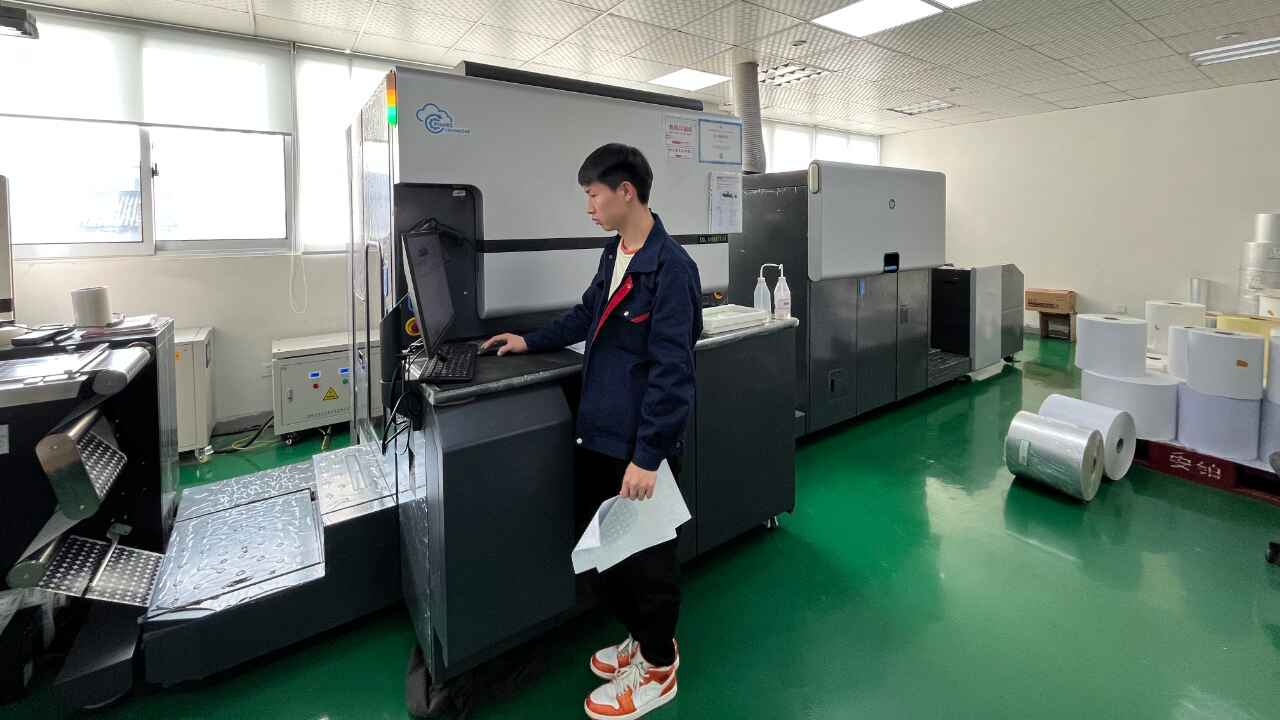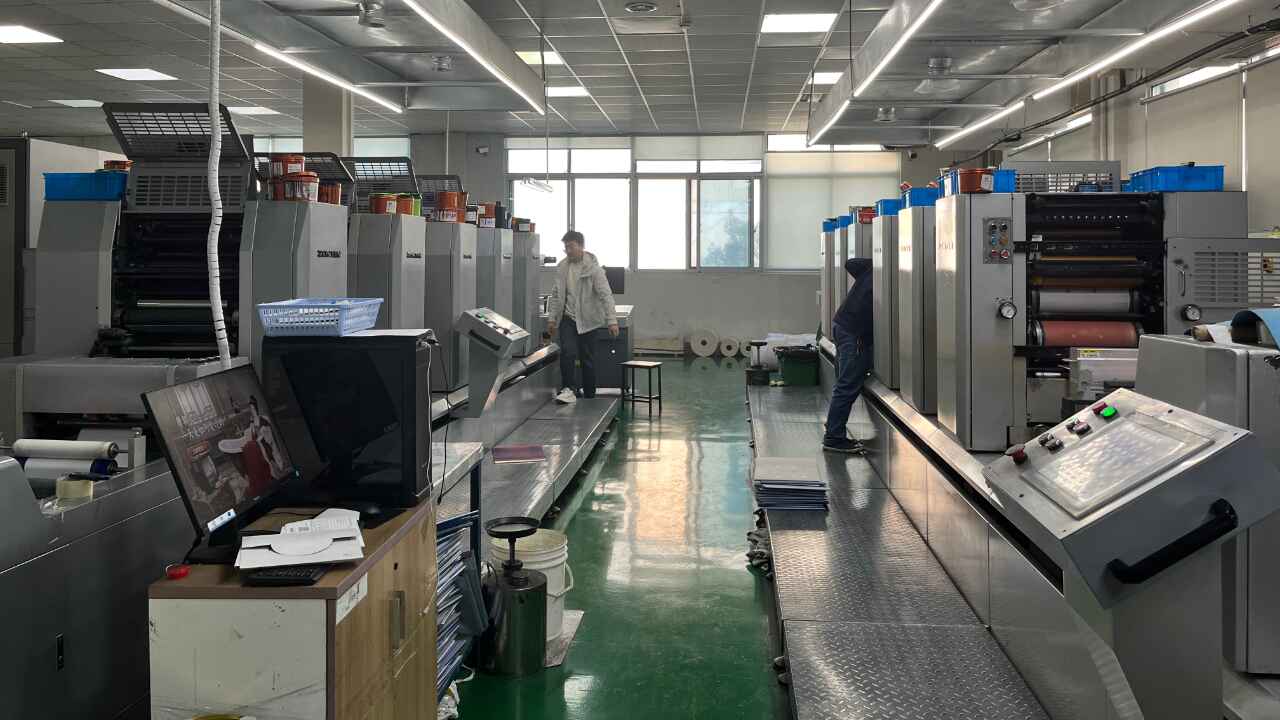Skyline Printing pushes digital transformation
Learn how Skyline Printing has fully automated its labels workflow, from receiving artwork through printing to converting and shipping.

In 2024, Skyline Printing undertook a hugely ambitious digital transformation project that was completed in just five months. This project established a fully automated process chain for its label production, giving the company a new competitive edge and driving growth in the package printing market.
Skyline Printing was established in Ningbo, Zhejiang Province, in 2006, and has since been focused on producing packaging and decorative printed materials. Its business covers decorated boxes, paper cards, shopping bags, festival cards, self-adhesive labels and various exquisite gift boxes. The company currently has 106 employees and a workshop area of 7,500sqm. In 2024, turnover was close to 100 million RMB (17m USD), with the label business accounting for 25 percent of total output, with a strong development momentum.
History
Ren Weifang, the founder and general manager of Skyline Printing, has a rich and rather extraordinary educational and professional background.
In 1984, he was admitted to Zhejiang University, a famous university in China, to study radio engineering. When talking about his choice of major, Weifang recalls, ‘At that time, neither I nor my parents had a clear understanding of different majors. My father was a film projectionist then and knew something about diodes, so he suggested that I choose the radio major.’
After graduating, Weifang was admitted to Fudan University to pursue an MBA. During his studies, he discovered a strong interest in macroeconomics and corporate management, firmly believing that a market-oriented economy was the inevitable path for China’s economic development.
Not long after, he switched to working in a private enterprise, overseeing administrative, human resources and information. He quickly progressed to become the general manager of a branch of the company. During this period, he first became aware of opportunities in the printing industry.
Applying his commercial and educational experience to understanding the development trajectory of China’s printing industry, Weifang quit his stable job in 2006 and founded Skyline Printing.
“During printing, the equipment reads the order number, receives production commands, adjusts parameters, and starts printing. The same in the finishing process, where die-cutting machines cut precisely based on online data”
In its early days, Skyline mainly focused on producing decorated boxes. To ensure product quality and production efficiency, the company invested in equipment from global brands such as KBA and Roland sheet-fed offset presses, which quickly made the company stand out in the market.
Around 2016, Weifang set his sights on the label business. He explains, ‘Through frequent contacts with customers, we quickly realized that although the size of the label printing industry is much smaller than that of all packaging products, it has great development potential and a good profit margin. Moreover, the purchase cost of production equipment for label products is much lower than that for packaging production. More importantly, our existing packaging customers also strongly demanded label products.’
Skyline Printing then invested in two Zonten intermittent offset printing presses, an HP Indigo 6K digital press, and several Reborn digital die-cutting machines and created a separate label division.
Digital empowerment
‘During our initial entrepreneur phase, we were fortunate enough to ride the wave of the rapid development and high profit margins in China’s printing industry,’ Weifang recalls. ‘The company experienced explosive growth. However, a few years later, the overall economic growth rate in China slowed down, and the printing industry entered a new stage where sluggish growth was the “new normal”.’
Printing is an asset-heavy industry, and market competition has become increasingly fierce with the economic downturn. Coupled with the continuous increase in labor and materials costs, many companies’ profit margins have shrunk significantly.
Adds Weifang, ‘With the continuous improvement in automation and the intelligence level of equipment, competition among enterprises is becoming more and more severe. The key to breaking through this dilemma lies in strengthening internal production and process management, improving production efficiency, and reducing production costs, to build the company’s core competitiveness.’
Digitalization is the top choice for achieving this goal. ‘During my previous job, I directly experienced the benefits of digitization and information management. That’s why I have always spared no effort to invest in the digitalization of Skyline Printing.’

As early as the second year after the company’s establishment, Skyline Printing made an investment in an advanced MES (Manufacturing Execution System) and implemented a lean management system, laying a solid foundation for the company in the era of fierce competition.
The pandemic accelerated the digital transformation of the printing industry in China. In 2023, Skyline Printing invested in building a ‘5G +’ digital printing factory, where industrial sensors and 5G data gateways work together to collect real-time energy consumption data during the production process accurately.
Skyline Printing continued to push ahead with its digital transformation through 2024.
Weifang explains, ‘Digital printing orders are short-run and need quick turnarounds. Time and efficiency matter a great deal. We’ve been pondering how to boost production efficiency further. Can we come up with a solution that streamlines the whole process, from ordering, scheduling, printing, to finishing, ensuring seamless digital information flow? This will eliminate the time-consuming and information errors caused by manual transfer between processes.’
But putting ideas into practice is always much harder than coming up with them, as Weifang soon found.
‘Take choosing an ERP system provider as an example. It must link up with all our pre-press, printing and post-press processes. But the truth is that each equipment supplier has different interfaces, and data formats are not uniform. This makes integrating processes tough.’
Fortunately, Skyline Printing’s digital transformation plan received full-throated support from its suppliers.
‘Take Esko and HP, two international leading suppliers in this industry. Their tech engineers and service staff made multiple trips to Skyline Printing’s factory for an on-site investigation. These two companies not only shared successful digital transformation case studies, but also actively teamed up with our local suppliers, Tuxian (ERP supplier), and Reborn (digital die-cutting supplier),’ shares Weifang.
Starting in June 2024, the technical team at Skyline Printing collaborated closely with their suppliers. They repeatedly tested and optimized technology, solving data-connection issues one by one. Within five months, they had successfully achieved full process automation over the production of label products and significantly contributed to the company’s overall digital transformation.
“Within five months, they had successfully achieved full process automation over the production of label products and made a significant contribution to the company’s overall digital transformation”
In the new system, as soon as a customer places an order, key details like quantity, materials, colors, processes and delivery details go straight into the ERP system, automatically generating a unique order number. This number is like a ‘production ID’. Staff use it to quickly prepare materials and plan production, getting things rolling smoothly.
After layout in the Esko system, design files transfer seamlessly online to the different printing processes without manual operation.
During printing, the equipment ‘reads’ the order number, receives production commands, adjusts parameters and starts printing. The same is true in the finishing process, where die-cutting machines cut precisely based on online data.
‘The first order completed by this system really made us feel the power of digitalization and gave us a great sense of accomplishment,’ Weifang says proudly. ‘This achievement has not only significantly improved our production efficiency but also enhanced the stability of product quality. Errors and costs caused by manual intervention have been greatly reduced.’
He also reveals that the company’s production efficiency has increased by at least 30 percent using the new system, with even greater potential for the future.
Personnel management
Weifang has always regarded talent as the core of any company’s success and has established a comprehensive system for talent cultivation and promotion. New employees are provided with a systematic training program covering professional skills and ethics to help them quickly adapt to the working environment. In daily work, they take part in a mentorship system, where experienced seniors provide one-on-one guidance to help new employees steer clear of avoidable mistakes.
Meanwhile, the company has a clear and transparent promotion pathway, depending on job performance and professional abilities. This fully stimulates employees’ work enthusiasm and creativity, allowing every employee to find their own path for growth within the company.
In addition to cultivating talent, Skyline Printing also emphasizes retaining talent. The company offers a highly competitive salary system, ensuring that employees are duly rewarded for their efforts.
Skyline Printing has set up multiple WeChat groups where the production progress of each department can be announced in real time. During the production process, responsibility for each link in the chain is clearly assigned to specific individuals, and the completion of job tasks is reported promptly.
All this detailed data serves as an important base for performance evaluation and a bonus at the end of the month. This has created a positive working atmosphere in the whole company.
Moreover, Weifang highly values employees’ emotional well-being. He actively encourages a work-life balance, striving to create a harmonious and healthy workplace where employees can fully tap their potential.
Thanks to its comprehensive management and assessment system, Skyline Printing has a ‘hands–off’ management structure. This approach motivates employees and allows Weifang more time to follow his other passions. He climbs mountains twice a week and regularly takes on challenging journeys, such as to the South Pole, the North Pole, Europe and America. He uses these rich experiences to fuel his management understanding.
Stay up to date
Subscribe to the free Label News newsletter and receive the latest content every week. We'll never share your email address.


